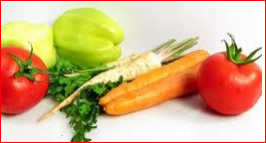Creatinine is a waste product that is formed in the body during the process of producing energy in the muscles. Creatine phosphate is a component of skeletal muscle, which breaks down to provide energy for the body's cells, and creatinine is formed. The creatinine thus obtained then enters the bloodstream to reach the kidneys, from where it is evacuated by the urine.
The rate of this metabolic process where creatine is converted to creatinine is fixed or constant, and about 2% of the body's total creatine content is used up everyday.
Therefore, in the normal course, there is no chance of increasing its daily output.
Our kidneys filter byproducts and waste our blood. To monitor kidney function, doctors measure serum creatinine levels, which is made of the breakdown of creatine phosphate in the muscles. Healthy kidneys filter out more creatinine. High serum creatinine levels indicate kidney damage or failure. For this, your doctor will prescribe a kidney regimen.
As the workload of your kidneys is lightened and the rate of damage slows down, your creatinine levels will become lower. Kidney diets focus on the control of protein, potassium, phosphorus, sodium and liquids. Follow your doctor's instructions and do not make any dietary changes or medications without consulting him.
POTASSIUM
Patients with elevated serum creatinine often have serum potassium levels as their kidneys become less able to suppress potassium in the blood.
Nephrologists recommend a low potassium diet when this occurs. The National Kidney Foundation suggests that adults with high potassium limit their intake to less than 2,000 to 3,000 mg.
PHOSPHORUS
Phosphorus is often a problem for patients with elevated serum creatinine.
LIQUIDS
As creatinine levels increase and kidney failure gets closer, your kidneys may be less able to produce urine.
SODIUM
Patients with high creatinine almost always have high blood pressure and often end up taking four or five different medicines for blood pressure.
PROTEIN
Patients with high levels of creatinine often have to change the amount of protein they consume.
High protein foods
Reducing protein in the diet can help decrease the amount of waste produced. Animal proteins are more contributory, such as red meat, chicken and pork. It is advisable to obtain enough protein from plant sources, such as soybeans and legumes.
High SODIUM foods
Canned foods are particularly high sources of sodium in the American diet. When eating, those trying to reduce their sodium intake should avoid fast food restaurants and ask that foods be prepared without salt.
High Glycemic
Foods Sweet foods like cakes, cookies, pies and sweets should be limited or removed.
DIETARY FOOD
When high creatinine is caused by dehydration, it is important to avoid foods that will help dehydrate the body. Beverages containing caffeine, such as coffee, tea and colas should be replaced with plain water or fruit juice. At least 64 ounces of fluid should be ingested daily.
The rate of this metabolic process where creatine is converted to creatinine is fixed or constant, and about 2% of the body's total creatine content is used up everyday.
Therefore, in the normal course, there is no chance of increasing its daily output.
Our kidneys filter byproducts and waste our blood. To monitor kidney function, doctors measure serum creatinine levels, which is made of the breakdown of creatine phosphate in the muscles. Healthy kidneys filter out more creatinine. High serum creatinine levels indicate kidney damage or failure. For this, your doctor will prescribe a kidney regimen.
As the workload of your kidneys is lightened and the rate of damage slows down, your creatinine levels will become lower. Kidney diets focus on the control of protein, potassium, phosphorus, sodium and liquids. Follow your doctor's instructions and do not make any dietary changes or medications without consulting him.
POTASSIUM
Patients with elevated serum creatinine often have serum potassium levels as their kidneys become less able to suppress potassium in the blood.
Nephrologists recommend a low potassium diet when this occurs. The National Kidney Foundation suggests that adults with high potassium limit their intake to less than 2,000 to 3,000 mg.
PHOSPHORUS
Phosphorus is often a problem for patients with elevated serum creatinine.
LIQUIDS
As creatinine levels increase and kidney failure gets closer, your kidneys may be less able to produce urine.
SODIUM
Patients with high creatinine almost always have high blood pressure and often end up taking four or five different medicines for blood pressure.
PROTEIN
Patients with high levels of creatinine often have to change the amount of protein they consume.
High protein foods
Reducing protein in the diet can help decrease the amount of waste produced. Animal proteins are more contributory, such as red meat, chicken and pork. It is advisable to obtain enough protein from plant sources, such as soybeans and legumes.
High SODIUM foods
Canned foods are particularly high sources of sodium in the American diet. When eating, those trying to reduce their sodium intake should avoid fast food restaurants and ask that foods be prepared without salt.
High Glycemic
Foods Sweet foods like cakes, cookies, pies and sweets should be limited or removed.
DIETARY FOOD
When high creatinine is caused by dehydration, it is important to avoid foods that will help dehydrate the body. Beverages containing caffeine, such as coffee, tea and colas should be replaced with plain water or fruit juice. At least 64 ounces of fluid should be ingested daily.




No comments:
Post a Comment